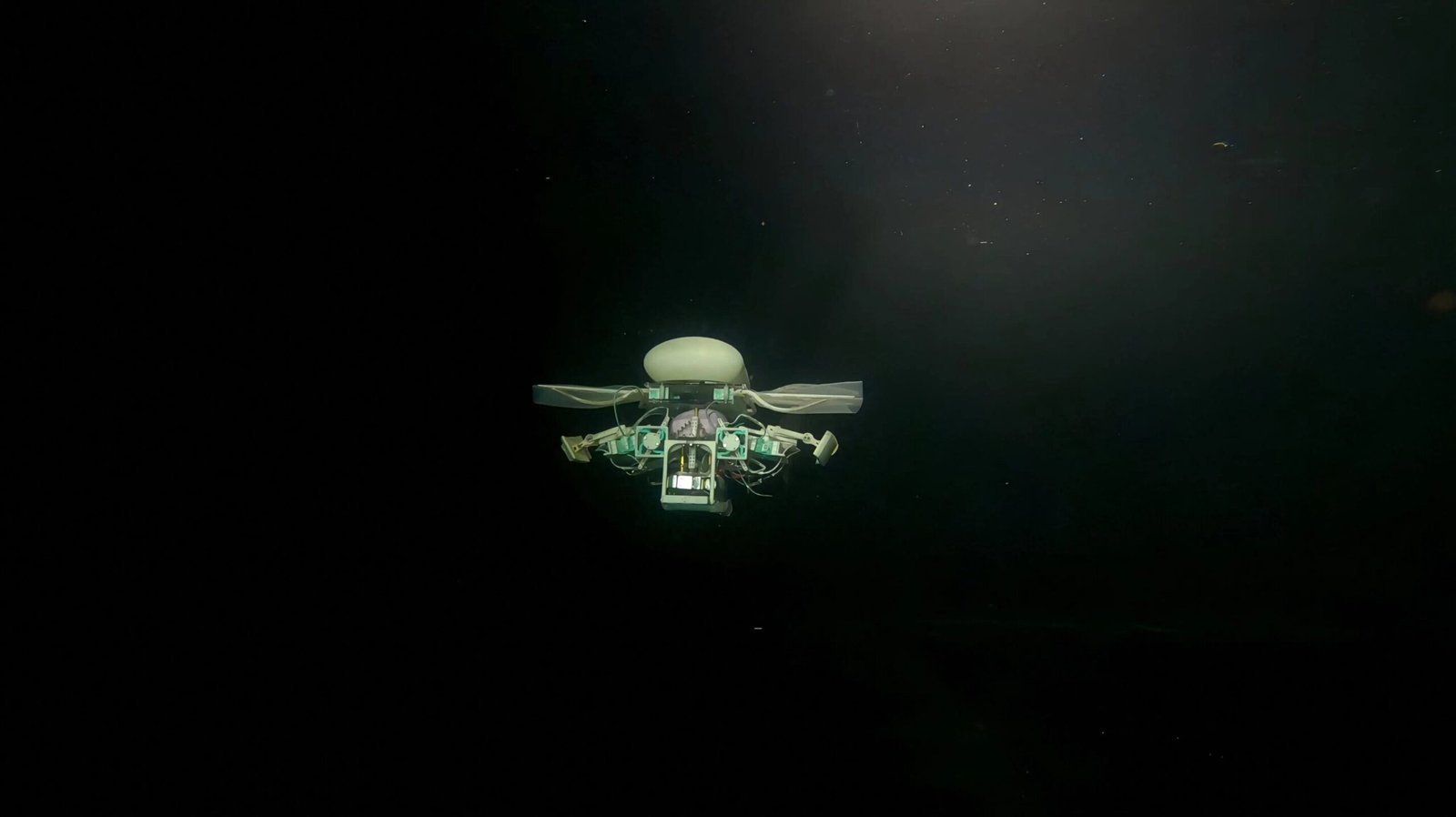Imagine a robot the size of a hand, capable of exploring the most inaccessible places on the planet. Scientists from Beihang University in China have developed just that: a miniature underwater robot that reached an astonishing depth of “10,600 metres” in the Mariana Trench, the deepest point in the ocean. This small autonomous explorer not only swam but also crawled and glided along the seabed, opening up new possibilities for deep-sea exploration.
How Does the Deep-Sea Robot Work?
The robot, developed by Chinese researchers, was designed to withstand the extreme conditions of the ocean floor, where pressure is crushing, temperatures are freezing, and darkness is permanent. In addition to the robot, the team also created a “soft gripper”, which can be attached to rigid robots. This device was tested in the South China Sea at a depth of 3,400 metres, where it collected marine organisms such as starfish and sea urchins directly from the seabed.
The Challenges of Deep-Sea Exploration
Exploring the depths of the ocean is one of the most challenging frontiers in science. Here are some of the main obstacles:
- Extreme pressure: For every 10 metres of depth, the pressure increases by 1 atmosphere. In the Mariana Trench, the pressure is over a thousand times greater than at the surface.
- Freezing temperatures: At the bottom of the ocean, temperatures can drop to around 1 to 4°C.
- Complete darkness: Sunlight does not penetrate beyond 200 metres, leaving the ocean floor in total darkness.
Additionally, traditional exploration vessels, often manned, can interfere with the ecosystems they aim to study. The robot from Beihang University emerges as an innovative solution, minimising environmental impact and enabling the exploration of previously inaccessible areas.
The Future of Marine Exploration
In recent years, underwater robots have revolutionised our understanding of the oceans. In 2024, for example, the Schmidt Ocean Institute recorded a massive crab migration, discovered a glowing psychedelic sea worm, and identified potentially “60 new species” in the waters off Chile. These advancements show how technology is unlocking incredible discoveries.
With successful tests in the Mariana Trench and the South China Sea, scientists from Beihang University hope that these tiny robots will help unravel the secrets of the deep ocean. These machines could not only expand our knowledge of marine life but also contribute to the conservation of these fragile and poorly understood ecosystems.
Conclusion
The miniature robot developed by Beihang University is a milestone in underwater exploration. By reaching the Mariana Trench and collecting samples at great depths, it demonstrates that technology can overcome even the most extreme challenges. With each new discovery, we are one step closer to understanding the mysteries that inhabit the ocean’s depths.
Stay tuned to our blog for more news on technological innovations and scientific discoveries that are transforming the world! 🌊🤖

